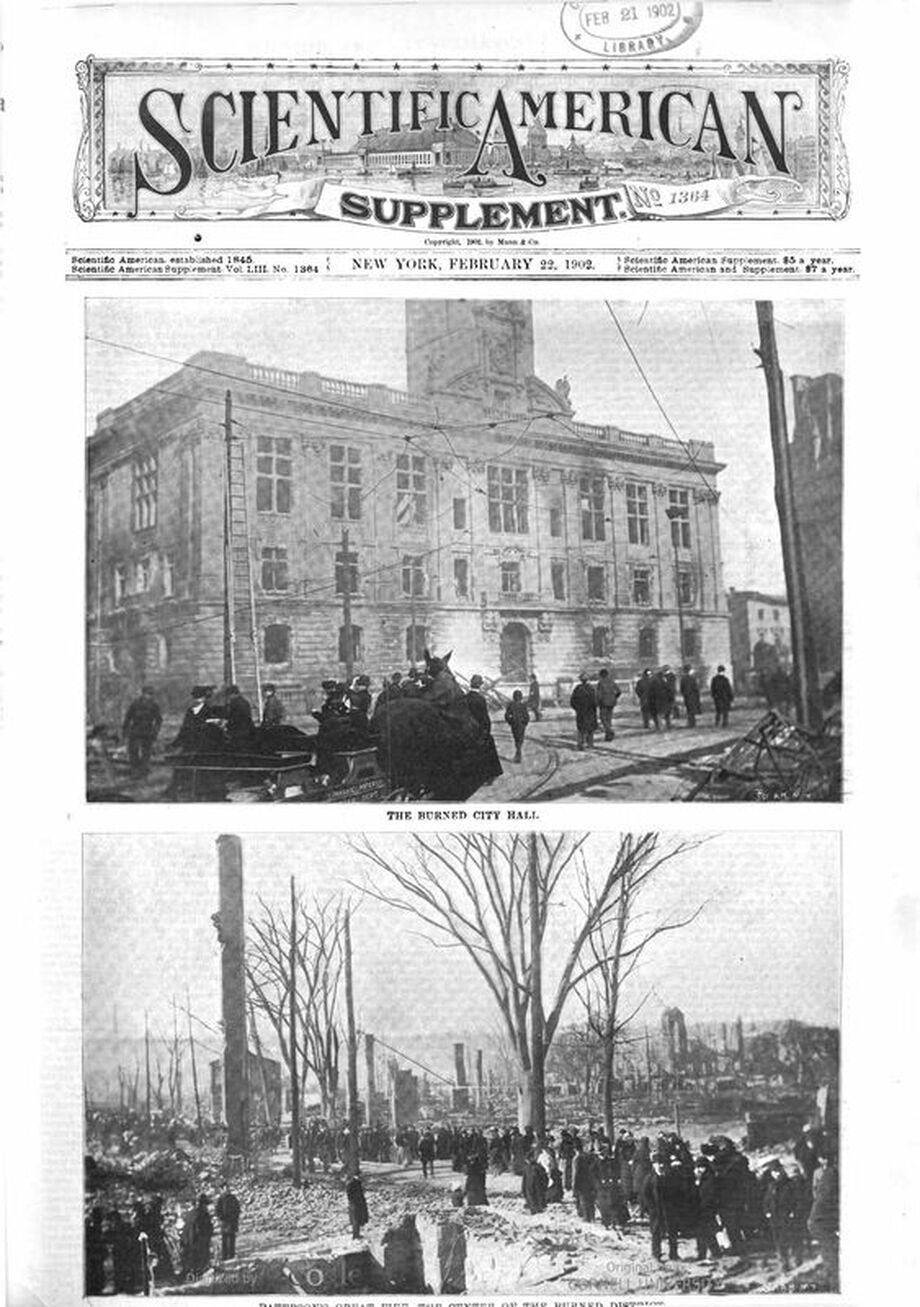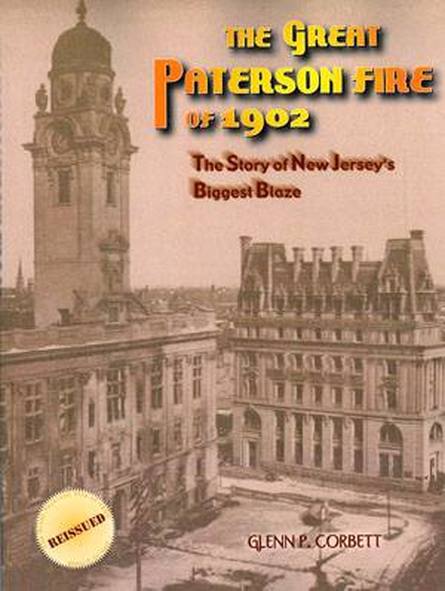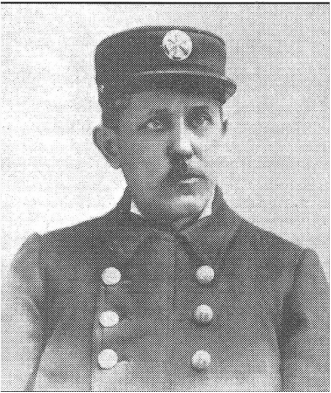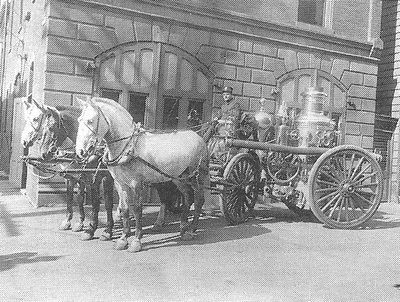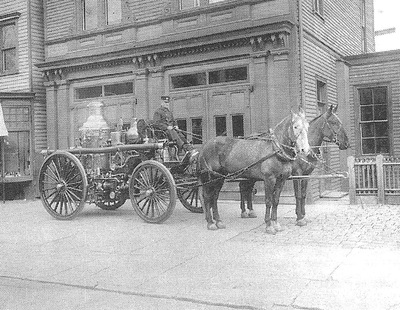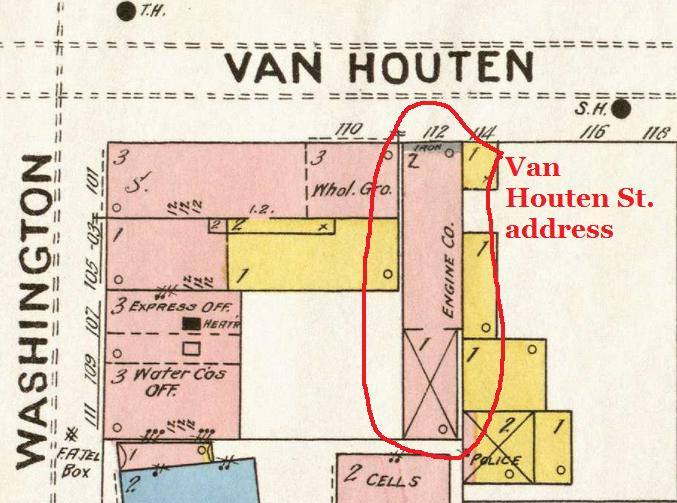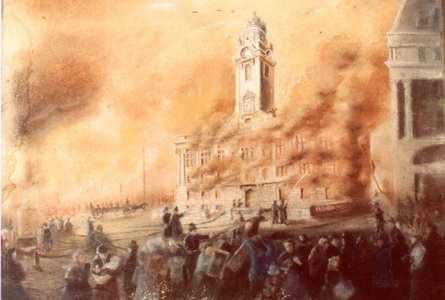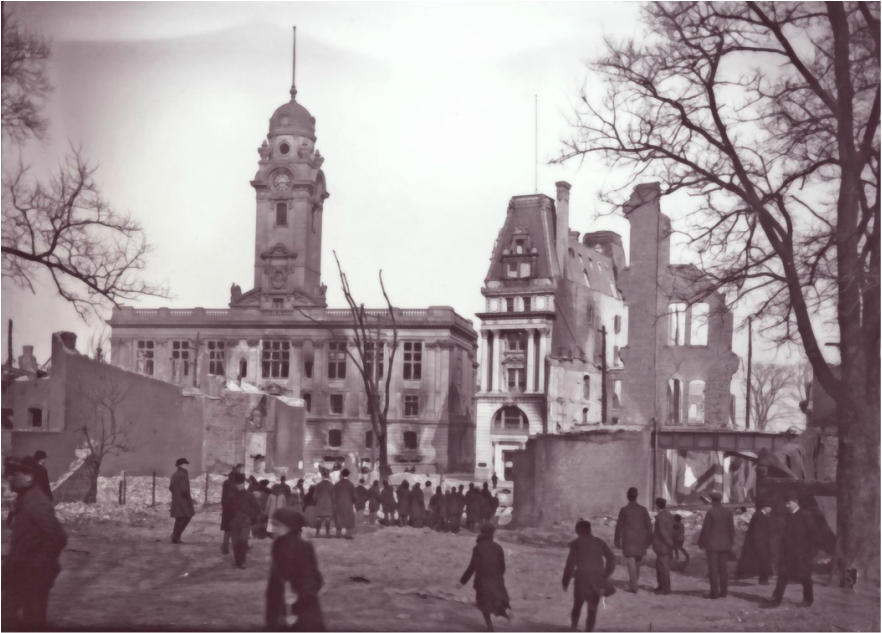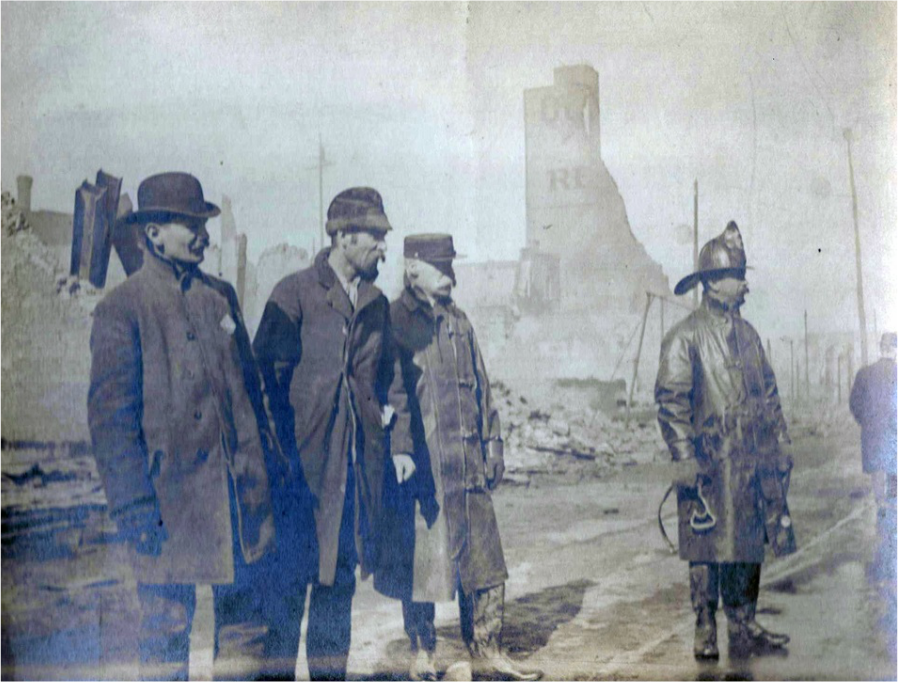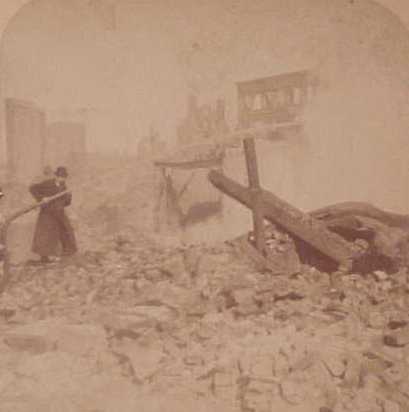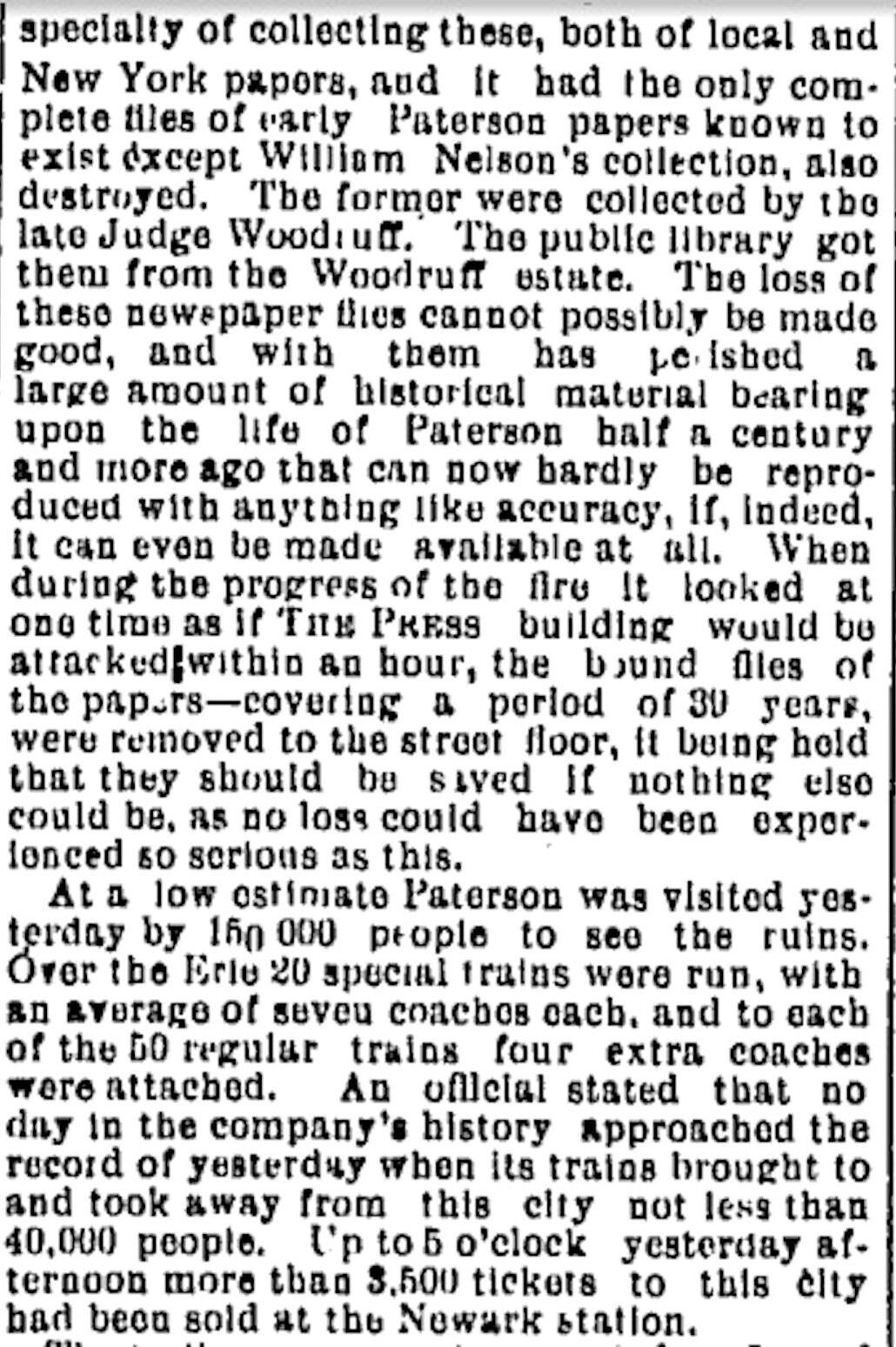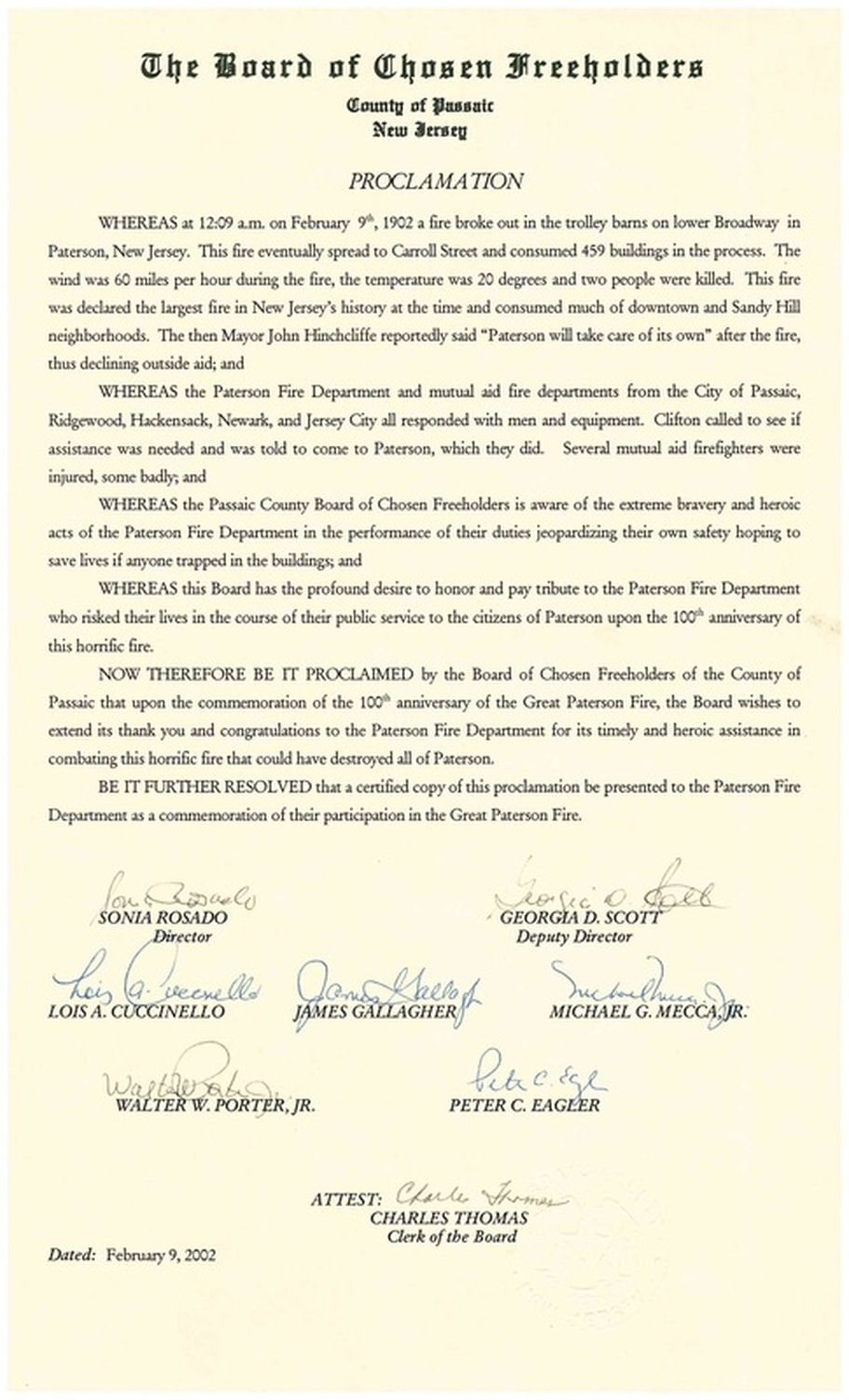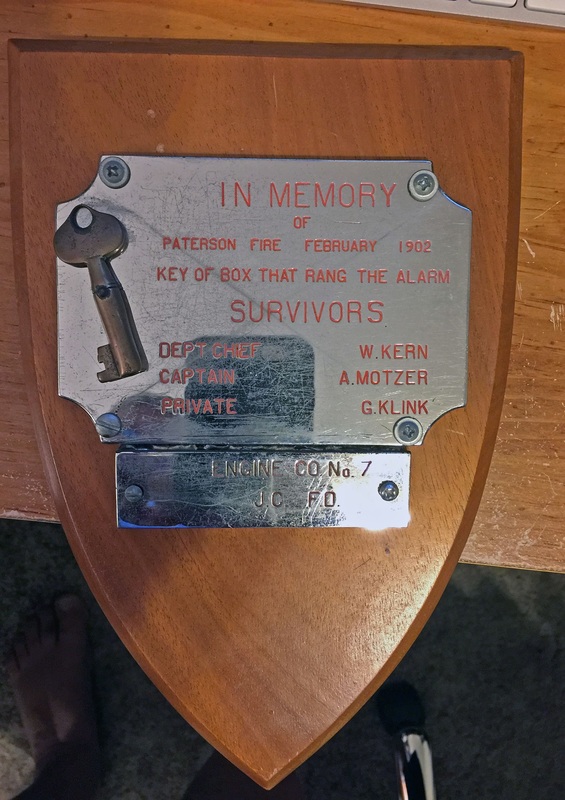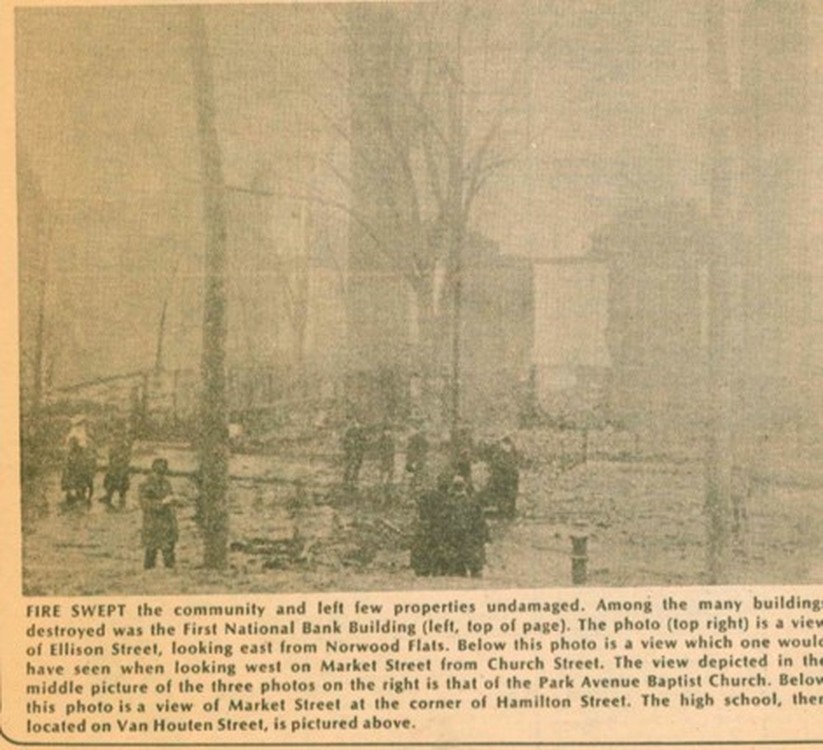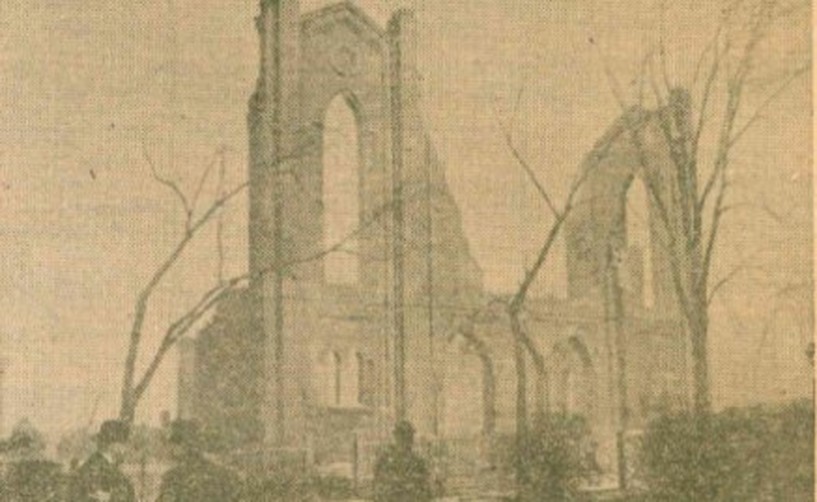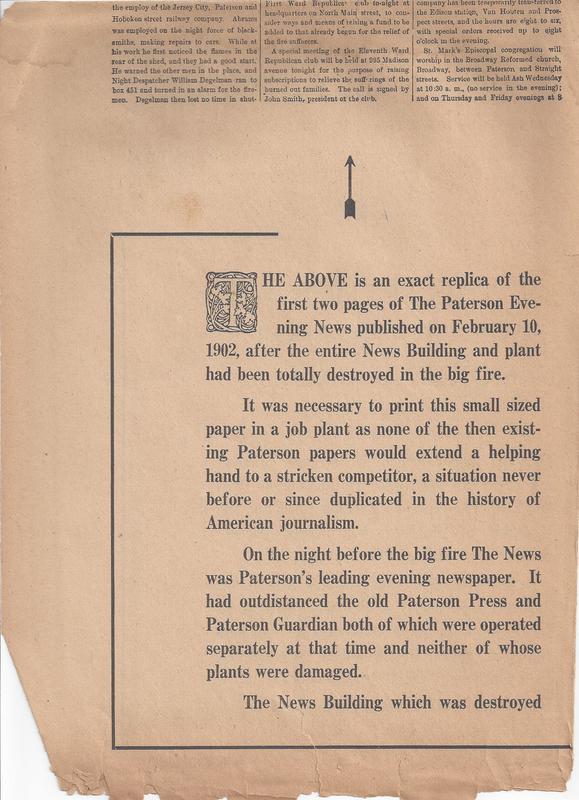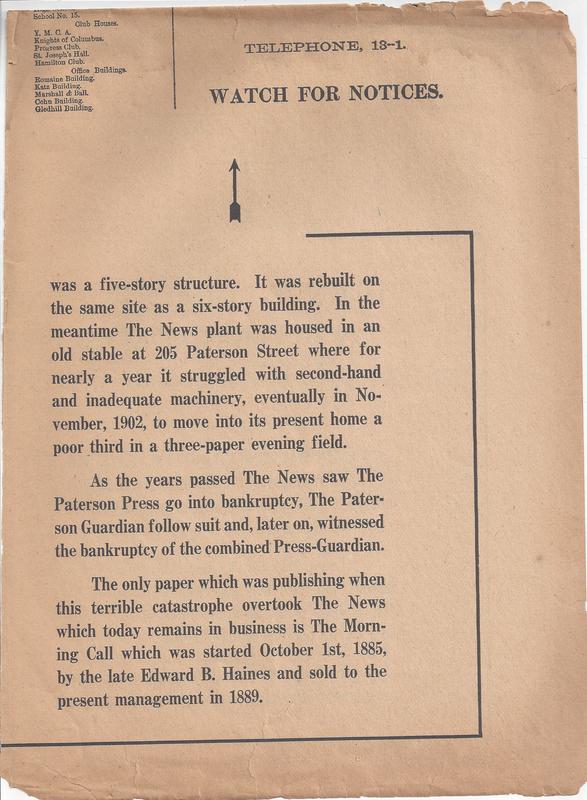- HOME
- OVERVIEW
- FIREFIGHTERS
- CHIEF ENGINEERS TOTAL
- CHIEF ENGINEERS PAID
- THE SUPREME SACRIFICE
- OBITUARIES / DEATHS
-
NOTABLE FIREFIGHTERS
- CALAMITA FAMILY
- CAPTAIN JOHN WEBER
- CUSACK FAMILY
- FLEMING FAMILY
- GERARD DUGAN
- HANCOCK FAMILY
- HENDERSON FAMILY
- HENRY OTIS HARRIS
- ISAAC FELICIANO
- JOHN GILMORE
- JOSEPH DAYSPRING
- JOSEPH FORBES
- KEARNEY-FAMILY
- MARIANI FAMILY
- McLAUGHLIN FAMILY
- MURRAY FAMILY
- PARKIN FAMILY
- SALMANOWITZ BROTHERS
- THE SIMONTONS
- THE SWEENEYS
- TICE FAMILY
- NOTABLE FIRES/INCIDENTS
- SPECIAL OP EVENTS
- TAKING THE HEAT BOOK
- HISTORICAL REVIEWS
- 1907 GUARDIAN
- 1936 HEARD & SEEN COLUMN
- FIREHOUSE PHOTOS / FACTS
- COMPANY & FH HISTORY
- SPECIAL OPERATIONS
- EMS
- COMMUNICATIONS / FA
- FIRE VIDEOS 1991-2011
- FIRE VIDEOS 2014-2022
- DOCUDRAMAS
- APPARATUS
- APPARATUS VIDEOS
- NOTABLE EVENTS INDEX
- MEMORABILIA
- PATCHES DECALS LOGOS SHIRTS
- WALLPAPER
- DEPARTMENT PETS
- TRAINING
-
VOLUNTEER DEPARTMENT
- AUXILIARY FIRE DEPARTMENT
- EXEMPT ASSOCIATION
- EXEMPT HOME & RELICS
- FMBA / PFA
-
BALLBOOKS
- 1909 BALL BOOK
- 1916 BALL BOOK
- 1918 BALL BOOK
- 1921 ANNUAL BALL
- 1923 ANNUAL BALL
- 1928 ANNUAL BALL
- 1935 PFD BOOSTER
- 1936 JANUARY PICTORIAL
- 1936 DECEMBER PICTORIAL
- 1937 ANNUAL BALL
- 1938 ANNUAL BALL
- 1939 ANNUAL BALL
- 1941 ANNUAL BALL
- 1942 ANNUAL BALL
- 1943 ANNUAL BALL
- 1944 ANNUAL BALL
- 1945 ANNUAL BALL
- 1946 ANNUAL BALL
- 1947 ANNUAL BALL
- 1948 ANNUAL BALL
- 1949 ANNUAL BALL
- 1950 ANNUAL BALL
- 1951 ANNUAL BALL
- 1952 ANNUAL BALL
- 1953 ANNUAL BALL
- 1954 ANNUAL BALL
- 1955 ANNUAL BALL
- 1956 ANNUAL BALL
- 1957 ANNUAL BALL
- 1958 ANNUAL BALL
- 1959 ANNUAL BALL
- 1960 ANNUAL BALL
- 1961 ANNUAL BALL
- 1962 ANNUAL BALL
- 1963 ANNUAL BALL
- 1964 ANNUAL BALL
- 1965 ANNUAL BALL
- 1966 ANNUAL BALL
- 1967 ANNUAL BALL
- 1968 ANNUAL BALL
- 1969 ANNUAL BALL
- 1970 ANNUAL BALL
- 1971 ANNUAL BALL
- 1972 ANNUAL BALL
- 1973 ANNUAL BALL
- 1975 ANNUAL BALL
- 1976 ANNUAL BALL
- 1977 ANNUAL BALL
- 1979 ANNUAL BALL
- 1980 ANNUAL BALL
- 1981 ANNUAL BALL
- 1982 ANNUAL BALL
- 1983 ANNUAL BALL
- 1984 ANNUAL BALL
- 1985 ANNUAL BALL
- 1986 ANNUAL BALL
- 1987 ANNUAL BALL
- 1988 ANNUAL BALL
- 1989 ANNUAL BALL
- 1990 ANNUAL BALL
- 1991 ANNUAL BALL
- 1992 ANNUAL BALL
- 1993 ANNUAL BALL
- 1994 ANNUAL BALL
- 1995 ANNUAL BALL
- 1996 ANNUAL BALL
- 1997 ANNUAL BALL
- 1998 ANNUAL BALL
- 1999 ANNUAL BALL
- 2000 ANNUAL BALL
- 2001 ANNUAL BALL
- 2002 ANNUAL BALL
- 2003 ANNUAL BALL
- 2004 ANNUAL BALL
- 2005 ANNUAL BALL
- 2010 ANNUAL BALL
- 2011 ANNUAL BALL
- 2014 ANNUAL BALL
- 2016 ANNUAL BALL
- ANNUAL REPORTS
- PFH CONTRIBUTORS
- ORAL HISTORY
- STATISTICS
- CONTACT
- CITY OF PATERSON
Destruction of Entire Downtown Area
The Morning Call February 3, 1902
The above print, nicely framed (see below) hangs in the Mayor's Office at City Hall,
155 Market Street.
155 Market Street.
|
The scene has several errors: Chief Stagg was sick at home and was not directing the fire. Horses were never kept so close to fire scenes - they were disconned and brought to safer locations. The steamers shown in the fire were of the type PFD bought after the fire, in 1902 they had much smaller, outdated steam fire engines. Unlikely they raised a ladder to such am engulfed building.
|
|
The most complete treatise related to the 1902 conflagration, the largest in Paterson's (and the state of New Jersey) history please see Glen Corbett's book pictured at right. It is available at the Passaic County Historical Society.
The fire started just before midnight on February 8 in the trolley car sheds of the Jersey City, Hoboken and Paterson Railway Company, located on Broadway, at the head of Mulberry street. The immense building took up an entire city block. The first alarm was sounded by an employee who ran to the fire box at Main Street and Broadway (Station 451) at 12:10 AM on Sunday the 9th. |
|
A photo of the famous WigWam which in 1902 was part of the trolley barn complex
|
A high wind (gusts of 50 miles per hour) was blowing on one of the coldest nights of the winter, and the tinder-like building was swept by the flames. Responding with the first alarm assignment from his location at Engine Company 5 on Water Street was Assistant Chief James Mills. The immensity of the fire was so obvious that the chief stopped at Main and Broadway and transmitted a third alarm (bypassing the second) from the Gamewell box. In 1902 a third alarm was in essence a general alarm and all PFD apparatus were thus summoned.
|
The fire evaded the heroic efforts of the firemen to stay its progress. Fanned by the gale, it swept away the business center of the city. Its progress was not arrested until it reached Carroll street. The heroics of the woefully undermanned and ill-equiped firefighters is described in great detail in the Corbett book. Incredibly, Chief Engineer John Stagg was home and bedridden at his home at 238 Van Houten Street with pneumonia and could not respond. Just a few short minutes after the first alarm, at 12:30 AM mutual aid was called for and the City of Passaic was the first to send additional apparatus, followed by Hackensack (steamer was horse pulled to Paterson) and Newark (arrived by train).
Mutual Aide: L-R: Hackensack Protection Engine Company and Newark Companies 3 and 9
Ultimately help came from New York City, Suffern and Trenton
From the starting point, the fire burned in a southeasterly direction, destroying the blocks on the westerly side of Main street, from a point near Broadway, to within three doors of Market street. On the easterly side of Main street the flames wiped out the two blocks from Van Houten street to the Paterson Savings Institution, at the corner of Main and Market streets.
|
On Washington street it swept the major part of the block bounded by Van Houten and Ellison streets (Police Headquarters and the 112 Van Houten Street Firehouse of Engine Company One were lost) and the entire block between Ellison and Market streets, with the exception of the Second National Bank Building. |
The flames also destroyed buildings on the southerly side of Market street from Hamilton street to Clark street, and the westerly half of the block bounded by Market, Church and Ellison street.
From this point the flying embers fired the buildings east of the Erie Railroad and destroyed property on the northerly side of Park avenue and between Park avenue to the southerly side of Market street as far as Carroll street. It was the biggest conflagration in the history of the city, and takes rank with the largest in the United States. The fire burned from midnight Saturday until 1 o'clock the following day, at which time the danger of a further spread of the flames was considered over.
Areas encircled in red below is the burned district
View from on high of Main Street looking North (taken from top of building at Main and Market Streets) - note PFD hose wagons bottom center and off to the right
Stereo card of a PFD Hose Wagon
|
Not counting sheds or outbuildings, 459 buildings were destroyed, among them large business houses, banks, City Hall, five churches and the Free Public Library, with its 37,000 volumes. The insurance loss was approximated at $8,800,000, and the property loss at $6,000,000. Five hundred families lost their homes and everything they owned. Fireman John McMullen (at right) of Engine Company 5 was injured during the collapse of Continental Hall. |
Unknown publication - courtesy Jim Eifler
The following text comes from an article by Todd Hollritt of the 1st Responder News. It reports on what was written in the Company Logbook by Captain B. Wilson. Although this report was presumed to be from an Engine Company it is very likely that it is from Truck Company 1 on Jackson Street: note Engine companies with hose wagons had more than 5 men in 1902, the only apparatus in 1902 carrying a 55 foot ladder was Truck 1 and one of the photos above show Truck 1 at the Hamilton Club, which is also mentioned in the log.
12:10 am Received an alarm of fire from Station 451
12:13 am Received a Third Alarm from Station 451. Apparatus left quarters with officer and 5 men. Fireman Norris being on sick list. Reported to Chief Mills at the car sheds (Origin of the fire) on Broadway and by him ordered to assist the department to get to work. Stretched in our chemical line to the rear of Cleveland, Stinsons and O’Neil’s stores finding that packing boxes and barrels had caught fire from sparks, while working at this fireground was ordered by Chief Gillmore to proceed at once to the First Baptist Church it having caught fire in the steeple.
Assisted Engine 7 (responded on the General Alarm) to get to work at this location, and then the Passaic Engine (Mutual Aide) came on the ground. Helped them to line in between School house and (Affiolic?) hall to rear of Guardian building. Raised a 35’ and a 30 ft ladder on the hall. We then manned a pipe from the Passaic Co. and worked on the Patrol Stable and changed the position of Engine 3 in the old City Hall. Then back to the Van Houten Street stables and changed the Passaic steamers line to the rear of the houses on Church St.
Was then ordered to the Hamilton Club raised a 55 Ft ladder. Assisted Engine 7 to the roof. But was forced back by fire. Was ordered by Chief Gillmore to go to Market Street and bring the Jersey City Engine (Mutual Aide) down to the corner of Church and Ellison Street where we assisted them to get to work on the Club house. While we were working our 55 ft ladder was broken. We worked at this fire until 9:30pm when we were ordered up by Chief Mills.
About 6:00 pm FF Kraus had to give up, his leg and foot paining him so he could not stand. And at 9 PM FF Farrel gave out having been taken with a severe chill.
Engine Company’s time 22 hours 30 mins. Truck time 22 hours 15 mins.
9:45pm To Quarters where we find we have lost one 30 Ft ladder two axes and two hooks. And find the 20 Ft extension ladder broke. Also one 3 gallon extinguisher lost.
10:00pm Fireman Farrell left quarters on sick report.
11:55pm Received an alarm by telephone from Headquarters to go to 290 Straight Street. Apparatus left quarters with officer and 3 men. On our arrival there we found our services were not required.
Capt B. Wilson Paterson Fire Department
Firemen: Breen, Devive, Absent Norris, Kraus, Farrell all on sick report.
12:20am To Quarters Co. time 25 mins.
9:00am Captain left Quarters to report to Chief Mills the condition of the Company.
12:10 am Received an alarm of fire from Station 451
12:13 am Received a Third Alarm from Station 451. Apparatus left quarters with officer and 5 men. Fireman Norris being on sick list. Reported to Chief Mills at the car sheds (Origin of the fire) on Broadway and by him ordered to assist the department to get to work. Stretched in our chemical line to the rear of Cleveland, Stinsons and O’Neil’s stores finding that packing boxes and barrels had caught fire from sparks, while working at this fireground was ordered by Chief Gillmore to proceed at once to the First Baptist Church it having caught fire in the steeple.
Assisted Engine 7 (responded on the General Alarm) to get to work at this location, and then the Passaic Engine (Mutual Aide) came on the ground. Helped them to line in between School house and (Affiolic?) hall to rear of Guardian building. Raised a 35’ and a 30 ft ladder on the hall. We then manned a pipe from the Passaic Co. and worked on the Patrol Stable and changed the position of Engine 3 in the old City Hall. Then back to the Van Houten Street stables and changed the Passaic steamers line to the rear of the houses on Church St.
Was then ordered to the Hamilton Club raised a 55 Ft ladder. Assisted Engine 7 to the roof. But was forced back by fire. Was ordered by Chief Gillmore to go to Market Street and bring the Jersey City Engine (Mutual Aide) down to the corner of Church and Ellison Street where we assisted them to get to work on the Club house. While we were working our 55 ft ladder was broken. We worked at this fire until 9:30pm when we were ordered up by Chief Mills.
About 6:00 pm FF Kraus had to give up, his leg and foot paining him so he could not stand. And at 9 PM FF Farrel gave out having been taken with a severe chill.
Engine Company’s time 22 hours 30 mins. Truck time 22 hours 15 mins.
9:45pm To Quarters where we find we have lost one 30 Ft ladder two axes and two hooks. And find the 20 Ft extension ladder broke. Also one 3 gallon extinguisher lost.
10:00pm Fireman Farrell left quarters on sick report.
11:55pm Received an alarm by telephone from Headquarters to go to 290 Straight Street. Apparatus left quarters with officer and 3 men. On our arrival there we found our services were not required.
Capt B. Wilson Paterson Fire Department
Firemen: Breen, Devive, Absent Norris, Kraus, Farrell all on sick report.
12:20am To Quarters Co. time 25 mins.
9:00am Captain left Quarters to report to Chief Mills the condition of the Company.
February 12, 1902 - Passaic Daily
February 12, 1902: PFD returns hose to McLean Engine 3 of Passaic
February 17, 1902: Paterson Daily Press review
Chief Stagg report on fire
In the first report following the big fire, Chief Stagg reported that the discipline had not been up to the usual standard and that charges against members had been more frequently made. Attention was again called to the urgent need of new apparatus to replace the old stock and to the need of at least two new engines, two hose wagons, one truck and one officers wagon in reserve at all times. The engines in service would not be capable of giving a good fire stream on the new and larger buildings to be erected over the fire ruins. He noted 26 blocks were destroyed or damaged.
December 26, 1903: Motion picture of the Great Fire to be shown in Waterbury, CT.
2002: 100th Year Anniversary Proclamation by Passaic County Freeholders
1902 Fire Memorabilia
|
In the plaque at right was put together in a very amateurish fashion by someone in Jersey City Fire Department but since no firemen died in the 1902 fire the term "Survivors" is confusing. We know that Jersey City did provide Mutual aide that night by sending two steam fire engines, Engines 2 and 7 (which came via the Erie Railroad)! But how in the world would JCFD get the Key to the Gamewell Fire Box that rang the alarm in Paterson [Station (Box) Box 451 - Main St and Broadway]. In Glen Corbett's book of the fire, Paterson Assistant Chief James Mills had the key to that box because from it he transmitted a second and third alarm - of course that box key would also open every box in Paterson - individual Fire boxes did not have unique keys. Did Chief Mills generously give the key to the men of JCFD?
|
Engine 7 on the day of the fire or did Paterson send box keys as a memento to every town that provided mutual aide? In Corbett's book he mentions that Chief Stagg did send out letters of thanks to various mutual aide cities. I suspect when this plaque was eventually put together the three men cited were the remaining "still alive" members of the JCFD Engine 7. Just another confusing undocumented firematic collectible we likely will never have the true story of..
In 2015 on "Antiques Roadshow" shown on PBS was a circa 1904 framed collage
of famous fires, including Paterson's Conflagration
of famous fires, including Paterson's Conflagration
1959: Obituary of the last Paterson Firefighter survivor of the 1902 conflagration (see details in article). Engine Company 6 Samuel Simonton
February 10, 1979 Paterson Morning News - Metro Life Look Back at Greatest Fire
Note: regarding the above photo: It is labeled as "a group of city fireman circa 1900" but is actually a picture of the men and steamer (with the hose wagon in background) of Engine One at the newly rebuilt 112 Van Houten Street Firehouse. - the view is looking west on Van Houten Street towards Washington Street. Interestingly 112 van Houten Street was the only FH that was significantly damaged in the 1902 fire (again not mentioned in story). Engine Company 1 had to relocate to the Prospect Street FH until their FH was rebuilt afterwards. Another error is the photo shows a big First Size Metropolitan Steamer which was obtained in 1903 a year after the great fire: prior to and during the big fire Engine 1 had a very out of date smaller (second size) 1886 Button steamer. The above photo could be anytime between 1903 and 1912 but certainly not 1900.
1940: For its Golden Jubilee the Paterson Evening News printed an exact replica issue by day after the fire (February 10, 1902).
February 10, 2002: The Record 100th Anniversary Review
2019 analysis of fire with maps - CLICK HERE
Proudly powered by Weebly


